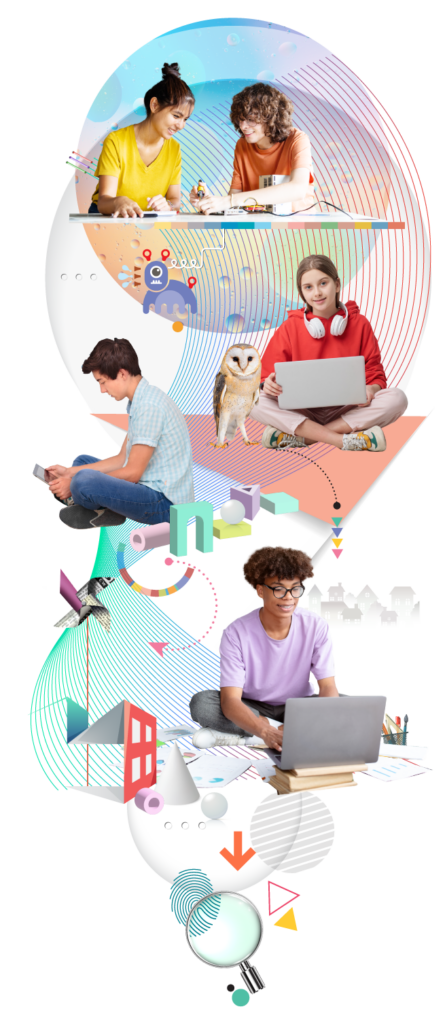Ripples@Work Assessment Tasks
The Ripples@Work model provides two types of assessment.
Assessment 1: Cinematic Journal (formative assessment)
The first type is formative. It has to be carried out several times in the course of the learning project. The more often the R@W coach/guide looks at the learner’s CJ, the better. The coach also takes photos of the DWall and looks at the development of the individual CJ in comparison to the DWall and other learners’ CJs.
For this reason, PowerPoint is an excellent format for a CJ, as it can be run in a shared mode between the student and the coach. In this way, the student can raise a question or concern that he or she might not feel comfortable expressing otherwise, especially in front of the group. The coach examines the generated material and reads the learner’s comments in their CJ. Rather than approving or disapproving, or saying what is wrong or right, the coach guides the learners by asking questions and encouraging them to ask themselves new questions. By answering their own questions, learners progress further in constructing their own knowledge. Through the approach of posing new questions and trying to answer them, learners engage in metacognitive activities. They develop the habit of asking themselves questions about whatever they are doing in their daily life and answering them. In this case, critical thinking is used not to assess what another person is doing but to interpret their own attitude. The individual learns to evaluate whether their own behavior is beneficial to themselves and others, and what needs to be done to preserve and further develop their ‘individual differences and variations’, and to eliminate ‘those that are injurious.’ That’s what Charles Darwin called ‘natural selection or the survival of the fittest.’ [1]
As a result of CJ assessment, it is possible to evaluate each student’s progress during the course of the project. Students may not gain significant knowledge in a specific school discipline in the traditional sense, but they can demonstrate their progress in applying their existing knowledge and skills in ways that are beneficial to themselves and others. Or they may not succeed at that either, and yet their application to the task might be commendable and their learning would consist of knowing what not to do next time or understanding that what they chose for the task wasn’t their best option. In R@W, learning how to adapt to a new situation and learning to re-invent themselves using individual talents and cognitive resources are the achievements the students are striving for.
Assessment 2: Group Outcome (summative assessment)
The completion of the group knowledge production leads to a summative assessment of the project. This can be presented in the form of a documentary, animation, 3-D construction or prototype, interactive installation, infographics, a podcast, blog or vlog, a local community presentation, or a drama/musical production. The grade is not given to the product but to an individual learner for his or her contribution to its production. The daily entries in the CJ, photos, drawings, audio, videos, and critical reflections demonstrate the individual learner’s contribution to the final product.
The CJ solves the main problem of group learning. That problem is evaluating a learner’s contribution fairly within a group production. As part of R@W, CJ multimodal recordings present the collected research material, annotations, and critical evaluations, and demonstrate an individual learner’s engagement in the project very clearly.
A summative assessment covers the 4Cs:
- critical self-reflection;
- multimodal communication;
- inderdisciplinary collaboration;
- DIY creativity.
Learn more about each aspect of the R@W assessment and develop rubrics that are relevant to your individual teaching style in the R@W_Pedagogy Studio.

